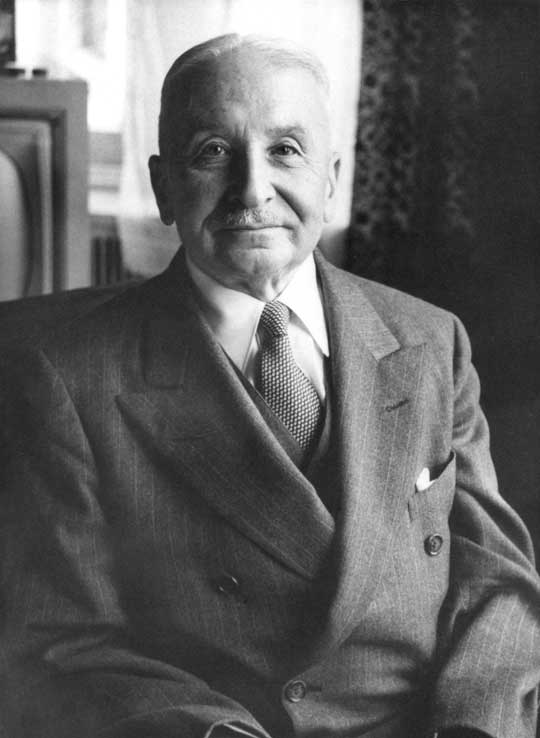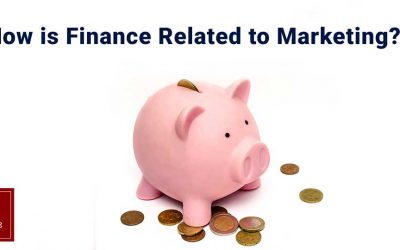Price – The Golden Variable.
Price alongside the product defines if a company is going to exist or simply perish from a given market. The Product is what the company sell and needs to be aligned with what individuals are demanding at a given moment, and price determines how much the individuals are willing to give in exchange for that good/service.
The more a company knows about these 2 market preferences, the more successful it will be.
In this article, we’re going to cover pricing techniques that you could use to set or adjust the price of your goods/services and also to give you a lead if you should continue to invest in your company, change the market, close down doors, and/or re-invent your business.
The World Marketing Forum also has an article covering How to Increase Price in case you want to go further down your knowledge on the topic.
Prices in an Economy.
Price is such a small word and has such an easy definition (the cost of purchasing a good/service) but choosing a pricing strategy and defining the price you are going to communicate/present to the market that’s a different story. Figuring out what’s the best price for a given market will maximize your profit and also importantly, avoid potential loss.
To define your pricing strategy you need information, and the more, the better, but even if at any given moment you have all the information, it is still impossible to come up with the perfect price as any small change even in the information detained by the other actors (consumers, producers, speculators, promoters, …) will affect this “equilibrium price”, making it impossible to have the perfect price, we need to develop pricing strategies that will bring us closer to this perfect value, for that, we need to rely on different assumptions.
Value Based Price.
The ultimate source of the determination of prices is the value judgments of the consumers. – Ludwig Von Mises
Every single individual values a certain good according to their own preference and contributes to the formation of the market price. The bigger the market the less each individual contributes, and also, the more he is disciplined by other members.
The price you determine should be strongly aligned with the value perception of your audience if you intend to maximize profit.
If the market values your good at 100USD if you sell at 110USD you’re not going to sell your whole production, if you sell at 90USD all your stock is sold, but your profit is not maximized.
The consumers don’t care about your price/quantity projections, previous prices, the investment you made, the cost of production, etc. Consumers will always opt for the goods that retrieve more value for less in return. Don’t mistake this statement for always opting for the cheaper goods. The optimal good for certain consumers might be a Rolls-Royce over a Mercedes.
A Listening Game.
For Marketers, it’s a listening game, it’s essential to be in touch with the market, its trends, and the evolution of preferences to design and conceive products that are valuable for a certain audience and the cost of production is lower than the selling price.
Ludwig Von Mises (1881 – 1973) was an Austrian Economist responsible for the “rebirth” of the Austrian Economic School of Thought funded by Carl Menger, Eugen Böhm von Bawerk, Friedrich von Wieser, and others which is considered by many economics academics as the most accurate economic theory. Photo by Ludwig von Mises Institute.
Cost Based Pricing.
Some Economists and Marketers defend that the right approach lies in designing a good product, determine the costs of producing such a product, set the price based on target profit, and then use several Marketing efforts to convince the consumers of the product value.
Cost Based pricing is highly risky and strongly depends on the success of the marketing operations, it is also applied more effectively on more complex goods and in a market that is less competitive.
Production Cost, does it matter?
Yes, it does, but solely for the company to determine if it compensates to operate in a given market or not.
The market doesn’t care about your cost of production, they will only buy your product if the price you present them is aligned with their evaluation. Their evaluation will depend on the information they possess, the assumptions they make, and the market conditions.
When Market Value is close to Production Cost.
If your cost of production is currently near to the market price for a certain good you have several options;
- Increase Productivity.
- Produce the same quantity of goods with fewer resources or more goods with the same resources.
- Increase Market Value Perception.
- Conduct Marketing activities that will increase the value perception of your goods in the market.
- Reduce Costs.
- Try to negotiate better prices with your business partners and the labor force.
- Innovation.
- Conceive and develop new features on the same product or develop an entirely new product.
- Abandon the Market.
- Depending on the current market stage (mature or declining) it can make sense to simply abandon the market and allocate the production factors to other goods.
Competition Based Pricing.
If your company is not a market leader or doesn’t have differentiating attributes in its products or services, a good pricing strategy might be following the standard market price, a little bit lower or above, depending on how a brand positions itself in the market, making price adjustments accordingly.
What are the Product Differences?
If you think that your Product is offering more value than your competitors, then you can charge a higher price, but if your Product is weak or you believe that the competitor product is strong, then you can play the underdog technique lowering prices and potentially earning more Market Share.
Multi-Factor Pricing.
A Multifactor pricing strategy has into account multiple factors and techniques, it accounts for the Value Perception, Production Cost, and also Competition Price. This pricing strategy is often used in German Automakers such as Mercedes, BMW, Audi, and Volkswagen.
Different Product Lines have different prices, many times sharing almost analogous production costs, but pricing according to the perceived market value and/or competitors price, also giving the illusion of different products.
Advanced Marketing Pricing Strategies.
A Marketer has to decide which of the above main pricing strategies will follow, and after that, it can think of implementing micro pricing strategies for certain products, product lines, or even the full spectrum of products.
We bring you 7 advanced marketing pricing strategies so that you can test and possibly implement to increase your profits.
Prestige Pricing.
In this strategy, a high price is charged to show high quality. Cannon and Morgan (1990) stated that for one category of customers, a high price means a higher status or high product quality. As per Brassington and Pettitt (2006), some customers assess quality by paying prestige pricing.
Normally, this type of goods or services are of the most exclusive nature, and also made by a certain sort of individuals that apply techniques that are valued by their target audience by their characteristics.
The majority of goods and brands are normally in the apparel industry as they serve the purpose of differentiating the ones who possess and own them. But you can also see this practice being used in all other industries.
This pricing strategy is very difficult to implement, as you need to enter the exclusive social circle, normally it also requires a top industry team or professional that is already recognized in the market and adopted by these members of society.
Differential Pricing.
According to Bearden, Ingram and Laforge (2004), this pricing strategy offers the same product to different customers at different prices.
Adopting this pricing strategy is connected with value based pricing, and might be beneficial as different audiences value goods in a different way, a certain audience (niche) might be willing to pay a higher price for a certain good than another audience. In order to maximize the profit and/or clear inventory, some companies sell their goods to different audiences at a lower price.
It’s commonly seen in Supermarkets, In the more wealthy areas, the cost of goods is higher than in a normal area store. It can also happen that a Brand that has a very good reputation in a certain Market (nation) can sell their leftover stock in another nation at a much lower price to deplete stocks.
Pro Tip: Marketers need to be careful with this technique as if customers are made aware of such practice they might not be very understanding, and their loyalty and appreciation for the brand and/or products might fade or disappear if logical reasons are not given.
With the increase of consumer power, market information and sharing of market data this technique is stopped being used.
Psychological Pricing.
In this pricing strategy, the psychology of prices is dominant over the simple economic value. According to (Kotler and Armstrong 2008), a Product is identified by its price in terms of Psychological effect.
The charged price appeals to the customer’s emotions and normally is supported by a strong narrative and marketing operations to persuade consumers into embracing this product/price relationship.
A good example of this is the Diamond Engagement Rings. Normally sold in retail by thousands, but if the owner wants to re-sell one to the jewelers he’s lucky if he gets a few hundred for it.
Dynamic Pricing.
Dynamic Pricing is applied in retail and e-commerce. It consists of price changes according to predetermined factors that can include customer demographics, geographic location, currency, chronological, etc…
As per Haws and Bearden (2006), in dynamic pricing strategy, prices change by consumer’s time, and conditions. (Kotler and Armstrong 2008) also referred to these prices to fulfill the needs of customers on a continuous basis.
Enacting dynamic pricing will maximize your profit, sell your inventories, and very often all different types of customers are pleased by the experience.
A good example of dynamic pricing is flight operators and the ticket price. In their algorithm, there are variables such as current flight occupancy, time of the day, time of the week, location of buyer, previous flight characteristics, etc.
Another example is found on consumer electronics e-commerce that also displays goods at different prices according to pre-selected variables.
In physical retail is also observed this phenomenon, normally due to hyperinflation, a spike of demand, or lack of supply.
By Product Pricing.
In by product pricing strategy, a more competitive price is placed on the most popular and performing product, all the other products of the company reflect a higher price than their competitors.
The idea behind this pricing strategy is to earn consumer trust and loyalty with a high-performing affordable product and expect the consumer will remember this when making other purchases where the brand is also present.
Bundle Pricing.
According to (Farese, Kimbrell, and Woloszy 2003) and Brassington and Pettitt (2006) in a bundle pricing strategy, several products are packed into a single package/product and sold at a certain price that’s lower than buying the same goods individually.
This strategy attracts those customers who want to save their time and want to purchase all things in one deal or the ones that perceive a higher value in this deal and don’t mind trying a new/different product.
This pricing strategy is often used to introduce new products in the market or to trigger more reluctant consumers into trying a product expecting they shift consumer habits. It can also be used to increase sales in value and quantity in a brief moment of time that cashflows are needed.
Odd-even Pricing.
This strategy follows the prices under even numbers because they are more attractive and have a tremendous psychological impact. According to (Farese, Kimbrell, and Woloszy 2003) this psychological principle works by the majority of consumers giving more attention to the unit case and not decimals, i.e. $4.99, $99.9 instead of $100.
Closing Statement.
Pricing is, alongside the product, the most fundamental variables for the success of a company. The World Marketing Forum hopes that with these pricing strategies you’re able to more consciously determine the price of the goods or services you are selling. Get it right and your success will be guaranteed.








